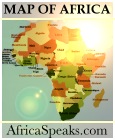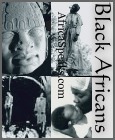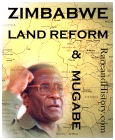AFRICA: THE TRUTH!
Posted: Wednesday, June 25, 2003by George Alleyne, Newsday/TT
The Emancipation Support Committee and other like groups should urge on the University of the West Indies the need for it to conduct research into the history of Africa, its level of industrial growth, including manufacturing industries such as cotton manufacture, garment manufacture, food processing, its mining industries including the smelting of iron ore, and its trading before the colonisers came.
The young people in the Caribbean of African descent must be rescued from the bondage of mind conditioning, induced by the deliberate falsifying of African history by Europeans, who because of their superior military power, including the possession and use of gunpowder, were able to seize large parts of Africa and control the continent's raw materials and trade.
The Emancipation Support Committee should insist that African History should be taught, not simply at the level of Form Four or thereabouts in secondary school, but from the Forms One, as well as, initially, at the primary school level.
The Europeans - Portuguese, Spaniards, British, French, Dutch, Germans and what have you - would enslave large areas and millions of people of Africa. Having done this they sought to justify slavery with utterly absurd conclusions of racial superiority. C. A. Bayley would state in a review published in the Times Literary Supplement of August 8, 1997 "What Language Hath Joined", that a French anthropologist, Paul Topinard, had in the 1880s, categorised human noses "from the heroically straight European Aryan nose, through the weak and stunted East Indian nose, to the scarcely human 'Negro' snub nose".
Bayley went further and told the story of an English Census official in India, H. H. Risley, working with the Indian Civil Service, who had sent out census enumerators through every part of India, measuring Brahmin noses, Rajput skulls, along with the length of arms of tribal folk, to create what he [Risley]believed was a racialist ladder of human evolution.
James Anthony Froude, an exceptional 19th century British Imperialist, offered clearly laughable 'craniological' measurements as 'proof' that blacks were inferior to whites. "The history of this aberration - racism justified by the empirical objectivity of occidental science - is well known", Richard Waswo would state in his "The Founding Legend of Western Civilisation", published in 1997 [Page 229].
It is instructive that the African, who is dismissed by the European as unproductive in an effort to justify his continuing exploitation, produced substantial surpluses for trade, including maize, beans, sesame seeds and rice. So great were the exports of rice from Tanganyika to Zanzibar that the Rufigi river valley was referred to as Calcutta Mdogo or "Little Calcutta".[Helge Kjekshus: Ecology Control and Economic Development in East African History: The Case of Tanganyika 1850-1950 - Page 32].
The Mahenge tribe, further down the Rufiji, and members of the same tribe, this time along the Ulanga/Kilombero river, in 1900 produced surpluses, Kjekshus pointed out, amounting to almost 4,000,000 kilograms. Again, the same writer would stress that thousands of tons of foodstuffs, iron, salt, tobacco and grain were routed through the [indigenous] trading networks of East Africa.
Cotton weaving is estimated to have been around East Africa from between the 10th and the 14th centuries, brought by the Persians, and stone spindles, which were excavated at Kilwa, have been dated to the age between the 10th and 16th centuries, and demonstrated "great development in the manufacture of cloth, probably cotton". [N. Chittick. "Kilwa: A Preliminary Report"]. Cotton weaving had been of tremendous importance to the indigenous economies in many parts of East Africa. Indeed, in the 1850s, it was said to be the only important handicraft in Zanzibar, Kjekshus wrote in Page 10 of his book, from which I quoted earlier.
About the same time as the initial European contacts with West Africa, Africans, even by the standards of the late 1990s, were relatively advanced in agricultural productivity,
But it was much more than that. Jack P. Greene, in a feature article, "The Englishing of America", in the Times Literary Supplement of December 12, 1997 [Page 12], would cite John Thornton: "Africans had well developed mining and metal-working, sufficient trade and waterborne transport to sustain a class of professional merchants and to permit considerable agricultural specialisation, and a significant manufacturing sector that supplied tools and clothing needs...."
The producers and/or traders of West Africa, much as those in East Africa, had a tendency toward long distance, as well as specialised trade. A. G. Hopkins in his benchmark "An Economic History of West Africa" [Pages 58-59], quoted by the late Trinidad and Tobago Economist, Max B. Ifill, in his 1986 "The African Diaspora" [Page 71], would have a great deal to say on this: "....the pastoralists of the Sahara-savanna border traded livestock, dairy produce and salt with the cultivators of the savanna in return for millet and cloth. In turn the savanna region traded livestock, salt, dried fish, potato and cloth with the peoples of the forest, from whom they received....kola nuts, ivory, ironware and cloth. Finally, producers in the forest sold various foodstuffs and manufactures to coastal settlements in exchange for fish and sea salt."
In the early days of their trade with West Africa, Europeans were content to purchase cloth throughout the coastal areas for resale. John Thornton, in his book "Africa and Africans in the Making of the Atlantic World: 1400-1800", published in 1992, pointed out that Mauretania, Senegambia, Ivory Coast, Benin, Yorubaland and what have you exported cloth to other areas of Africa through European middlemen, and that Congo [formerly Zaire] has been described as "among the major textile-producing centres of the world".
European greed would surface. The Portuguese intervened, militarily, in West African trade along the Upper Guinea coast, as early as the 15th century, and as the late Guyanese Socialist, Walter Rodney, wrote in his classic, "How Europe Underdeveloped Africa" [Page 121], the Portuguese interfered in the transfers of indigo dye from one African community to another. They commandeered the trade in salt throughout the coast of Angola, in cowries in the Congo, and that of high quality palm oil between northern and southern Angola.
The Portuguese forcibly interrupted the flourishing canoe trade in textiles between the Ivory Coast [then Cape Lahou] and Ghana [the Gold Coast], by constructing a fort at Axim. [Rodney: How Europe Underdeveloped Africa]. When the Dutch seized Axim in 1637, they found the coastal trade still thriving. They attempted, without success, to end the canoe trade, but were well enough armed to force the traders to carry Dutch goods, and for the people of the Ivory Coast to purchase a determined amount of Dutch goods. Rodney would state: "Partly by establishing a stranglehold on the distribution of cloth around the shores of Africa, and partly by swamping African products by importing in bulk, European traders succeeded in putting an end to the expansion of cloth manufacture."
I ask the reader to forgive me for quoting Walter Rodney once again, when he stressed that by the time Africa entered the age of colonisation [by the Europeans], West Africa had been 'persuaded' to shift to the export of raw cotton cloth and the import of manufactured cotton cloth. It has been established through radiocarbon readings [see J. H. H. Speke's "What led to the Discovery of the Source of the Nile"] that East Africa had been producing iron since 500 B.C. The iron produced in Usangi, in Central Tanganyika, for example, was said to have been "as famed as Swedish steel", and there was a thriving trade. Kjekshus cites a German officer as stating that 150,000 market hoes were sold annually in a market town in East Africa.
But by early in the last century foreign imports, imposed on East African nations by their colonial masters, began to hobble the iron-smelting industry there, and several blacksmiths, with the drop in business, abandoned their craft to become porters etc. [G. Lechaptois in Aux Rives du Tanganyika].
Alvin Toffler, quoted in his book "The Third Wave", published in 1981 by Bantam, New York, the following: "The commercial policy applied by all the colonising countries was to open as much as possible the markets of their colonies to metropolitan products....even in the case of independent countries commercial treaties were concluded by agreements or by force."
Having subjugated large parts of Africa, crippled African industries by denying the colonies concerned the right to impose protective tariff barriers against cheaply produced European goods; enslaved the people because of superior fire power and the cynical application of a divide and rule policy, Europeans would parrot obscene phrases about so-called African inferiority.Printer friendly version
Send page by E-Mail

Previous Page | Zimbabwe Watch | Historical Views | Home
NOTICE: All articles are the copyright property of the writers. In accordance with Title 17 U.S.C., section 107, some material on this site is provided without permission from the copyright owner, only for purposes of criticism, comment, scholarship and research under the "fair use" provisions of federal copyright laws. Visit: http://www.law.cornell.edu/uscode/17/107.shtml for more details. If you wish to use copyrighted material from this site for purposes of your own that go beyond 'fair use', you must obtain permission from the copyright owner.










